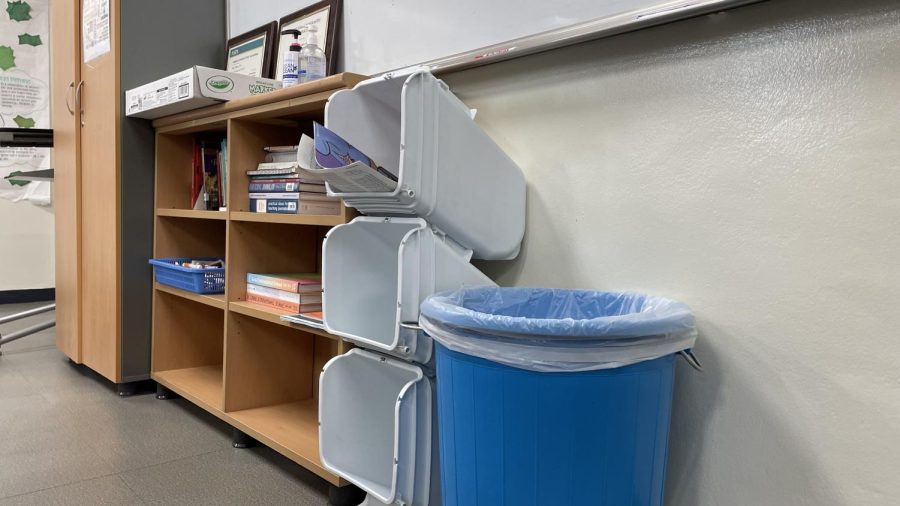How effective is recycling in SIS?
Walking through the hallways around SIS, you may have encountered colorful recycling bins with different labels to separate waste. With a growing global awareness of sustainability, recycling is a practice that schools, including SIS, have also aimed to promote. So what has SIS done to increase recycling and how effective are such efforts?
The main recycling method at SIS are the recycling bins in every classroom. Theoretically, the three different bins made for three different materials–paper, cans, and plastic–can facilitate the separation and grouping of waste. However, this process did not go as planned.
“I have found that many students end up not paying attention to putting their waste in the right bin,” Minji Kim (10), said. “Most of them throw away their trash during transitional periods, so they are usually too busy or distracted to separate it.”
This is demonstrated by the blue waste bin usually present next to the recycling bins. The unlabeled blue bin can be seen as an all-encompassing waste bin, leading students to use the blue waste bin for all of their trash instead of compartmentalizing it into the three recycling bins. A quick look inside the blue bin shows that this is true; items like water bottles, papers, and drink cans, all categorizable in the three recycling bins, are in the blue bin. Meanwhile, the recycling bins are all empty.
“As far as I know, the custodians end up sorting through the blue bins and separating the trash,” Stephen Shifflett, English 10 teacher, said.
Since the recycling bins seem to be unsuccessful, what other methods can encourage recycling at our school?
There could be ways to make the original methods more effective. For example, a recycling contest between grades or classes, which could measure how well the separation in recycling bins was done, might encourage recycling among the students while still making the activity seem less like a chore.
Decreasing the amount of trash to recycle may be helpful as well. Many students end up buying plastic water bottles from the school store rather than bringing a reusable water bottle from home. By bringing a reusable bottle, students can decrease the number of plastic bottles that need to be recycled, therefore decreasing the amount of trash produced.
The administrative team could also contribute to this change. Simple actions like changing the packaging of school items into paper bags or raising awareness about the importance of recycling through announcements may be good first steps.
Although it may seem like a chore, starting with small activities like recycling can help to create a more sustainable school environment.

Hannah is a senior reporter for Tiger Times Online. She loves drawing, writing narratives, and listening to new genres of music. In her free time, she...

